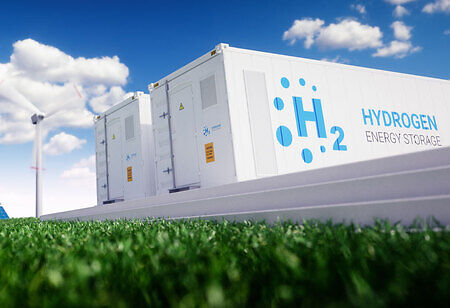
India or China: Who Will Win the Race of Clean Hydrogen?


Today’s lifestyles can manage most kinds of work with available energy, and some are barely able to get by. Moving forward will require more energy than what is consumed now. The estimates by the International Energy Agency (IEA) predicted that the global energy demand will rise by 25 and 30 percent by 2040. This means that there will be more CO2 in the air for an economy heavily dependent on coal and oil. But of course, decarbonizing could mean a ray of hope, which will most possibly be driven by clean hydrogen.
Hydrogen, the abundantly available chemical on the planet, is not found in pure form. Rather, it has to be extracted from components such as natural gas, biomass, or water through electrolysis. But who are the frontrunners in this race to adopt and scale up clean hydrogen? The answer to that is revealed by Jane Nakano, a senior fellow at the Center for Strategic and International Studies (CSIS), who said that both India and China have the potential to become world leaders in clean hydrogen. Let’s look at India’s place on the hydrogen scale.
India has a New Hydrogen Policy
India is set on using solar and wind expansion to reduce its reliance on fossil fuels and focus on achieving climate goals. Although it still needs coal, oil, and biomass to boost its energy sector. It’s tackling this vulnerability by not only stepping up its game on renewables; it is headstrong in gaining its throne in the green hydrogen sector.
This year, the government introduced a green hydrogen policy aimed at producing five million tonnes of fuel per year by 2030, which is about half of the European Union’s target. Through this policy, clean power will be transmitted for hydrogen production between states while addressing connectivity issues that have been interrupting the circulation of solar and wind energy. The policy also ensures its support in manufacturing units across the country.
But a Hydrogen Market is yet to be Established
Firstly, hydrogen’s applications are not as broad as other clean energy sources. Second, the gas gets easily fired up, which means difficulty in moving it and why most industry experts suggest that it's better to use it where it's produced.
With plants positioned within the industrial clusters where the fuel would be used, a hydrogen map of India in the future will appear considerably different from a solar one.
The Energy and Resources Institute (TERI), a Delhi-based think tank, predicted that by 2050, India's current six million tonnes per year of annual hydrogen demand—primarily met by the fertilizer and refinery sectors—could have increased fivefold. The potential mass uses of green hydrogen are still unknown, despite the optimism.
Hemant Mallya, who leads the think tank Council on Energy Environment and Waters (CEEW), claims to be working towards creating a market for green hydrogen and is developing a strategy as well. According to Mallya, the goal is to turn India into a hub for green hydrogen that can export electrolyzers and green hydrogen derivatives like ammonia, which the maritime and aviation industries look at as low-carbon fuel.
Sandeep Kashyap, ACME Group’s chief operating officer, expresses positively that if renewables go according to the government's plans, the installed capacity of wind, solar and other renewable sources in the country will leap to 500GW by 2030.
China Already has a Hydrogen Long-Term Plan
The Chinese government unveiled the nation's first-ever long-term hydrogen plan, which runs from 2021 to 2035. The plan outlined a staged approach to creating a domestic hydrogen economy, as well as to developing technologies and manufacturing capabilities. It identified the nation's pledges to carbon peaking and neutrality as its main motivator.
But Renewable-based Hydrogen Plan Remains Modest
While China's most recent hydrogen plan offered some clarification, it also created a number of issues. The target volume for renewable-based hydrogen in 2025, which is in the range of 100,000-200,000 tons yearly, is noticeably low despite a positive view for the increase of renewable capacity.
According to the China Hydrogen Alliance, renewable hydrogen production might reach 100 Mt by 2060, or 20 percent of China's total energy consumption. Between 2025 and 2060, China may greatly increase its renewable-based hydrogen production, but will this development in renewable energy maintain pace with the rise in demand for both electricity and hydrogen?
The most recent plan says that the Chinese government is increasingly concentrating on research and innovation in hydrogen-related technologies. The emphasis reflects the nation's goal to fill the knowledge, experience, and infrastructural gaps in the existing low-carbon hydrogen production. For instance, alkaline electrolysis technology, which is well-established and affordable but far less compatible with intermittent renewable energy sources than polymer electrolyte membrane (PEM) electrolyzers, is where China currently finds competition. Alkaline electrolyzers dominate the Chinese market, where PEM electrolyzers only make up less than 10 percent of the total.
However, it is observed that many state-owned enterprises (SOEs) have been investing in hydrogen projects. In contrast, several subnational governments have identified hydrogen as a key economic priority or formulated hydrogen development plans. It’s unknown how these SOE undertakings have long-term commercial viability or whether the subnational plans are in sync with the national policymakers seeking to shape the country’s hydrogen economy. Therefore, how does the long-term national hydrogen plan affect these numerous, uncoordinated subnational and business sector undertakings? Judging by the pace, scope, and direction, China’s low-carbon hydrogen requires attention over multiple implications.
But looking at its five-year economic plan, for now, it can say that it recognizes hydrogen as one of the six industries of the future. Although it currently has no national strategy in place, hydrogen features in 16 provincial and city energy strategies.

